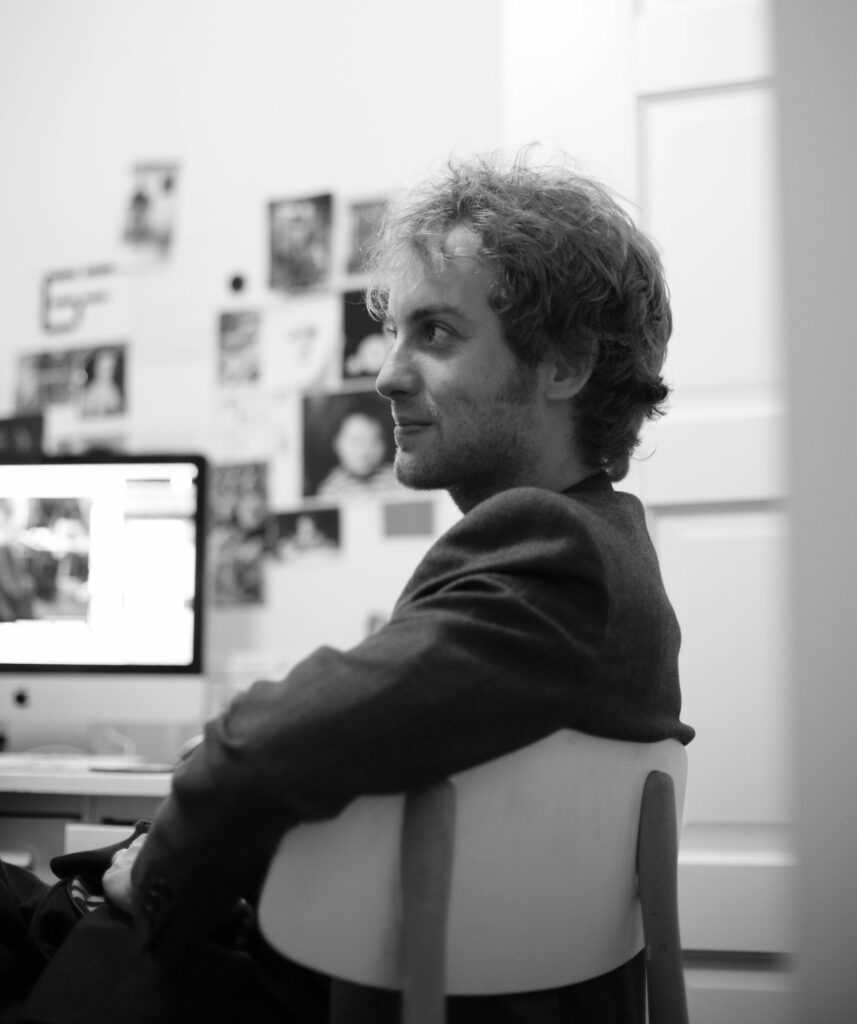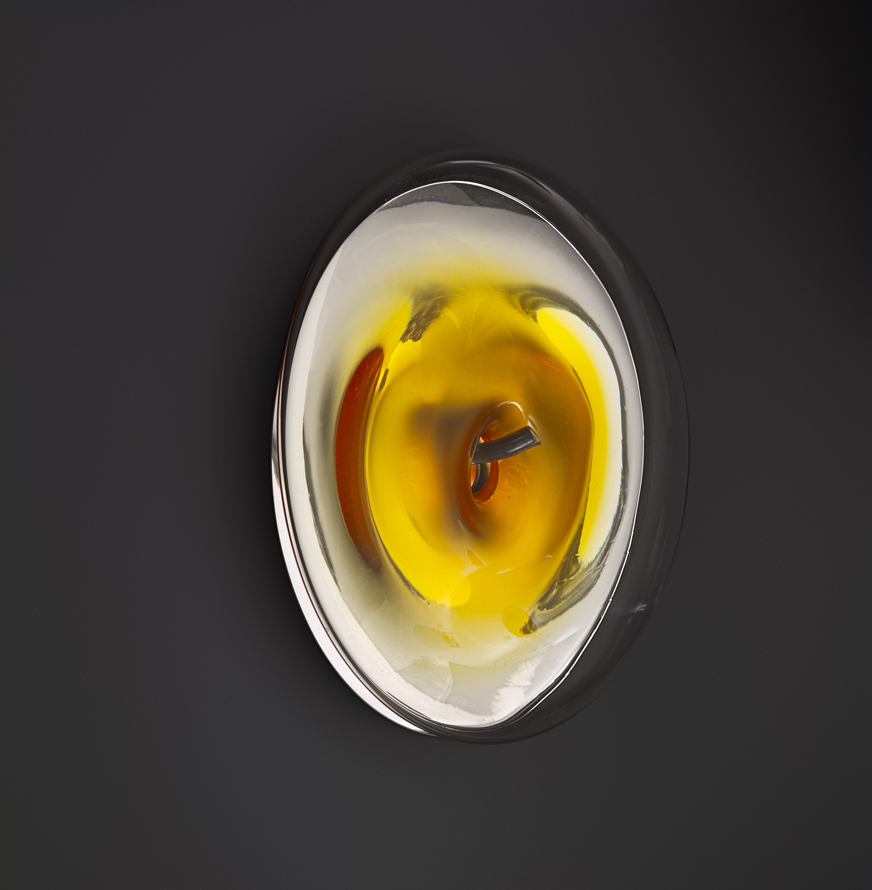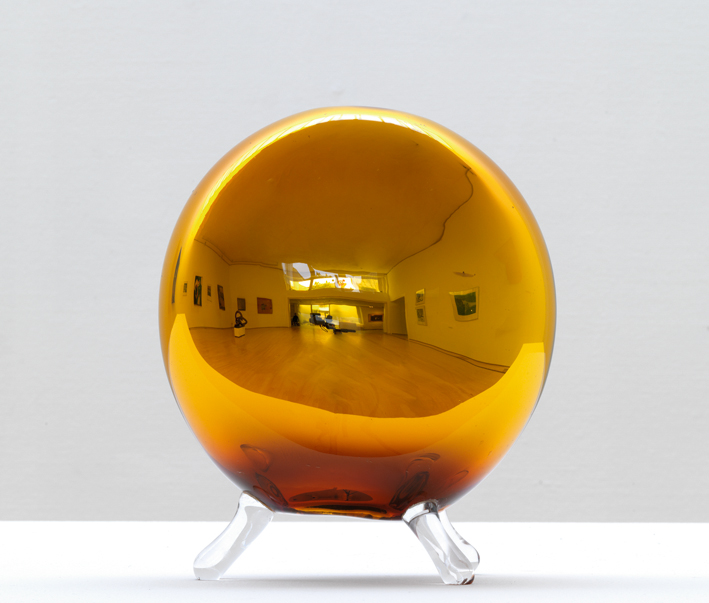Tomas Hillebrand (1977) won the Van Vlissingen Art Foundation Prize in 2013. For his inspiration trip, Tomas traveled to Japan on a quest for craftsmanship, perfection and the untainted natural world. The exhibition, Tomas Hillebrand in Japan, was on display at the Museum Jan van der Togt in Amstelveen in September of 2013.
Part of the Inspiration series, a book of the same name was written by Marcel Brouwer and published by Waanders Publishers. The exhibition Tomas Hillebrand in Japan took place in September 2013 in the Museum Jan van der Togt, Amstelveen.
Tomas Hillebrand’s fascination with Japan began at a young age. As an artist, he draws his inspiration from Japanese culture: the focus on craft, productivity and the balance between body and mind. Tomas produces free-standing sculptures in glass. His works are characterized by the natural material, as well as the craftsmanship, technical refinement and concentration with which they are made. Hillebrand’s works pursue a contemporary interpretation of Romanticism, the 19th-century art movement in which the relationship between the miniscule, vulnerable individual and the beauty and grandeur of nature is central. The importance lies not in the visible reality and reason, but rather in the individual experience and imagination.
Nature serves as a source of inspiration for Tomas. He specifically looks to it for its beauty and harmony. Tomas’ chosen medium, and the way in which he handles it, gives him the feeling of consciously bowing before nature. He expresses respect for nature. Hillebrand further understands that this also, implicitly, renders his work a statement. Naturally, he is witness to the flawed relationship between man and nature and worries about the world inherited by future generations. Still, he makes a distinction between his personal views and the way in which he wishes to express himself as an artist. With his imaginary worlds, Tomas wants to entice the viewer to connect with their sense and perception of beauty in a contemplative way.
Tomas received dedicated advice from lacquer (urushi) master Tetsuo Gido and Japanese photographer Atsushi Okuyama. Okuyama decided to show Tomas unique places in northern Japan, offered him a bed in his studio and a place at the table with his family. Okuyama insisted that Tomas visit the Hiraizumi temple complex with its beautiful landscape garden – a UNESCO World Heritage Site. This was an unforgettable experience for the artist. The Golden Hall of the temple inspired Tomas to use gold leaf in some of his works. The highlight and goal of Tomas’ trip was Joboji, where Tomas visited urushi workshops and spoke to artisans. He was able to see firsthand how the resin of the Japanese lacquer tree is tapped, drop by drop, from the bark and processed into precious lacquer.
Tomas’ trip to Japan made possible the execution of a series of works in which Tomas combined glassblowing with urushi. The award from the Van Vlissingen Art Foundation has brought Tomas very close to traditional Japanese culture. The trip provided him more life experience and resulted in a special connection with the locals, who were genuinely interested and open.
The landscape photos Hillebrand took while traveling around Japan showcase nature in its purest form— purity in which you can still express your own imagination, and which overwhelms man. Hillebrand used this as a source of inspiration for his glass sculptures.

Tomas Hillebrand’s fascination with Japan began at a young age. As an artist, he draws his inspiration from Japanese culture: the focus on craft, productivity and the balance between body and mind. Tomas produces free-standing sculptures in glass. His works are characterized by the natural material, as well as the craftsmanship, technical refinement and concentration with which they are made. Hillebrand’s works pursue a contemporary interpretation of Romanticism, the 19th-century art movement in which the relationship between the miniscule, vulnerable individual and the beauty and grandeur of nature is central. The importance lies not in the visible reality and reason, but rather in the individual experience and imagination.
Nature serves as a source of inspiration for Tomas. He specifically looks to it for its beauty and harmony. Tomas’ chosen medium, and the way in which he handles it, gives him the feeling of consciously bowing before nature. He expresses respect for nature. Hillebrand further understands that this also, implicitly, renders his work a statement. Naturally, he is witness to the flawed relationship between man and nature and worries about the world inherited by future generations. Still, he makes a distinction between his personal views and the way in which he wishes to express himself as an artist. With his imaginary worlds, Tomas wants to entice the viewer to connect with their sense and perception of beauty in a contemplative way.
Tomas received dedicated advice from lacquer (urushi) master Tetsuo Gido and Japanese photographer Atsushi Okuyama. Okuyama decided to show Tomas unique places in northern Japan, offered him a bed in his studio and a place at the table with his family. Okuyama insisted that Tomas visit the Hiraizumi temple complex with its beautiful landscape garden – a UNESCO World Heritage Site. This was an unforgettable experience for the artist. The Golden Hall of the temple inspired Tomas to use gold leaf in some of his works. The highlight and goal of Tomas’ trip was Joboji, where Tomas visited urushi workshops and spoke to artisans. He was able to see firsthand how the resin of the Japanese lacquer tree is tapped, drop by drop, from the bark and processed into precious lacquer.
Tomas’ trip to Japan made possible the execution of a series of works in which Tomas combined glassblowing with urushi. The award from the Van Vlissingen Art Foundation has brought Tomas very close to traditional Japanese culture. The trip provided him more life experience and resulted in a special connection with the locals, who were genuinely interested and open.
The landscape photos Hillebrand took while traveling around Japan showcase nature in its purest form— purity in which you can still express your own imagination, and which overwhelms man. Hillebrand used this as a source of inspiration for his glass sculptures.

